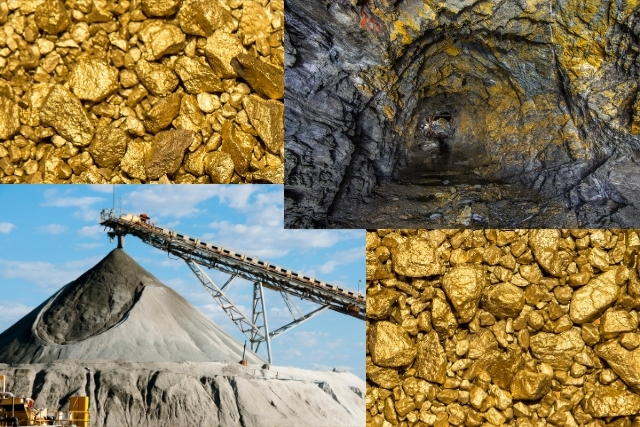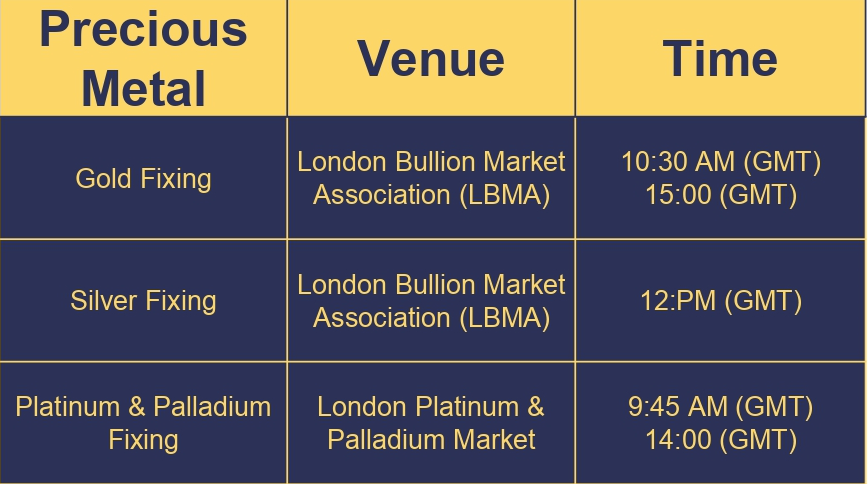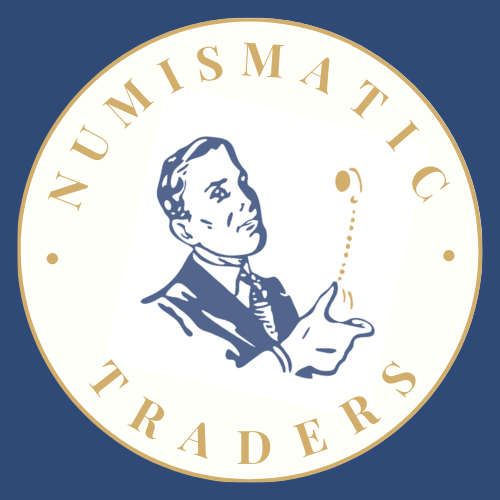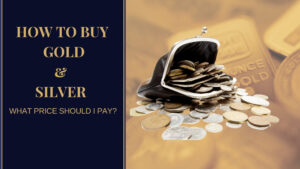Many people are confused about the spot price when they are talking about how to buy gold and silver. People that are new to buying gold and silver expect to pay the spot price and make claims such as “I know what the spot price is and I will not be fooled to pay more”.
The reality is any person on the planet can get the spot price of gold and silver within seconds on the internet. The spot price is a very important consideration when you are looking to buy gold and silver but it is highly unlikely the price that you will pay as a private investor. A purchase price below the spot price can be regarded as a bargain when you are looking to buy gold and silver.
What is the spot price of gold and silver?
What is the going rate for gold and silver right now on the spot? That is the spot price. The spot price is the current cash market price for buying and selling one troy ounce of gold or silver. The price is payable for the immediate delivery of the commodity traded. The spot price is quoted for .999 fine gold and .999 fine silver.
There are a number of markets all over the world where gold and silver are traded. The bullion desks of banks step in to buy gold in one place and sell it to another. This ensures a standard fluctuating market price that is updated by the bullion desks of the big banks where they publish their prices.
The market participants
The price of gold and silver are established through supply and demand as the various market participants play out their roles in the market.
1. The producers or mines (supply)

The supply side of the market is dealt with by miners and recyclers. The miners dig for gold and extract gold from the earth’s crust. Most ores mined by mines are not pure gold ore. The mines remove the waste material and non-metal particles which have no value at the site of the mine and produce a compact bar. This bar is called a doré bar. A doré bar majorly consists of gold with other useful alloys such as silver. This metal bar is now acceptable and more manageable for the refinery process as it is pure enough and large enough for refineries to handle.
The doré bars have few or no markings with no particular standard and their weights differ from mine to mine. You can think of a doré bar as chunks of metal with a high gold content and other precious metal alloys. In general gold doré bars are composed of between 70%-80% gold and 10%-15% silver. Silver doré bars in contrast generally consist of 90% silver and 10% gold.
Gold mines cannot respond quickly to changes in the gold price. The mining lifecycle from discovery to production is very long and often takes decades. – World Gold Council. In order for miners to ensure their profitability, they hedge themselves against price risk by entering into future contracts.
These contracts are agreed upon delivery of a specific quantity of gold or silver at a predetermined price on a predetermined date. In case the prices of precious metals fall, the miners are protected against possible losses. These future contracts play a significant role in determining the price of gold or silver.
Miners send their doré bars to refiners where it is further refined into gold or silver of different forms and purity. Miners sell their gold typically at prices below the spot price.
2. Refiners

Refiners receive doré bars and then melt the metal in a hot furnace. Various chemicals are added to the substance which separates the gold from other metals.
According to CNBC only refiners approved by the London Bullion Market Association (LBMA) are accredited to produce the most widely produced gold bars, the: London Good Delivery Bars. These bars are known as the gold standard of the gold-world and must be at least 99.5% pure, weigh between 350 – 430 ounces and be stamped with a unique serial number, the fineness and the seal of the refiner.
Up until this point, the gold is still typically owned by the mining company. Once the gold is refined, ownership is transferred to the gold bullion banks.
3. Bullion banks
The bullion banks provide various services to the entire wholesale gold industry and ensure the smooth transition of gold from producers to end-users. They step in to provide financing to all the participants. They supply large amounts of wholesale metal to the primary consumer markets and ensure delivery of the physical metal all over the world.
They also stock physical precious metals to be used to stabilize the market price by adding to the supply of metals when the market price rises sharply and buying when the prices suddenly drop.
The bullion banks act as a middle-man by providing trading services for spot trading, forward trading, options and vaulting. Due to their large trade volume on behalf of clients the bullion banks are reliable sources of precious metals spot pricing.
Some commercial banks have bullion desks that provide similar services as bullion banks.
4. Central banks
20% of gold mined is in the hands of Central banks and they are important participants in the gold market that influence the price. Central banks buy a lot of gold and their gold buying has reached record levels in recent years. This helps them to mitigate their currency risk. The Peoples Bank of China has been a major investor in gold in recent years. Good Delivery Bars is the favorite form of gold with 75% of banks buying gold in Good Delivery Bars form – Resourceworld.com
5. Mints
According to the Mint Industry, there are 70 government-owned mints and 40 privately-owned mints. Government Mints are also called Sovereign Mints or National Mints. Mints are the facilities that produce a legal tender for their country according to stringent weight, purity and face value which are guaranteed. National Mints produce coins for circulation or collectors coins for collectors.
The big difference between Sovereign and privately owned Mints is that private owned mints do not produce bullion for legal tender. Their products contain their own branding, designs, purity and metal content.
Mints also manufacture bullion bars, rounds, medallions and other types of bullion.
Mints buy gold and silver from refineries just above the spot price. Mints make profits from:
- the difference between the face value and the cost of making coins for circulating currency;
- The premium that investors & collectors will pay for the price of refined bullion bars and coins above the raw metal price.
Certain Mints sell bullion directly to the public such as Australia’s Perth Mint. Other Mints generally do not sell their bullion products directly to the public like the Royal Canadian Mint and the US Mint. They only sell in bulk to approved dealers who have the infrastructure so buy and sell directly from the public. Mint bullion is sold at a static markup or dollar amount or a relative percentage markup on the spot price to cover manufacturing, transportation and delivery costs.
The Mints do however sell products as collectibles in proof condition at a substantially higher premium over the spot price. The increased premium above the spot price is due to the lower quantity produced and a number of other factors such as special or alternative designs, proofs, finer polish, greater luster, burnishing etc.
6. Bullion dealers
Bullion dealers are authorized middle-men between the Mints and consumers whereby bullion and coins are sold through a network of distributors that ensures availability and efficient distribution. Gold and silver bullion is sold by the Mint in bulk quantities to dealers which allow the Mint to keep their costs and markups low. The competition between dealers ensures that the premium above the spot price is kept to the minimum. Bullion dealers rely on moving large quantities at low margins.
Consumers

There are 3 different types of consumers that drive the demand for gold and silver in the market.
- Investors
Central banks and commercial banks hold gold and silver as reserves and currency hedge. Other investors consider gold and silver bars and coins to reduce their exposure to overpriced asset classes and as a safe haven.
- Jewelry
The jewelry industry buys a range of semi-fabricated gold and silver in wire and granule form from refiners. These gold and silver alloys are mostly sold in grain forms as it is easier to work with and can be sold in varying smaller quantities. India and China are the biggest customers of gold jewelry. - Industry
Gold and silver in industry are required for high-end consumer electronics, electric cars, LED and printed circuits.
There is an interesting relationship between jewelry demand and investing demand. In weak economic environments, the jewelry consumer demand is weak. This is in contrast to investment demand that increases when the economy is sluggish and low returns are expected from other asset classes.
Sources of the spot price
The price of gold and silver is derived from two key markets. The Futures and OTC markets. They are wholesale markets that trade in large volumes. In both markets, dealers will ask brokerage fees which must be considered when determining the price.
-
Future contracts exchanges
We have learned above that future contracts play a vital role for producers to lock their prices so that they can be ensured of a certain price to cover their production costs. These futures are called hedge futures. Hedge futures are also used by portfolio managers and consumers. Futures are also being traded for speculative purposes.
Future contracts are traded on public, regulated exchanges. The largest and most well-known exchanges are the COMEX exchange which is part of the New York Mercantile Exchange.The spot price of gold is determined by the forward month’s futures contract with the most volume. The spot price is derived by algorithms that assess the market data from supply and demand figures in the gold derivative markets. A live gold price is generated from this market data.
-
Over-the-Counter (OTC)
In the OTC market, a network of traders independently deals with each other via telephone or the dealer’s electronic trading platform. They trade in 400 oz gold bars and 1000 oz silver bars usually for settlement in London. The price agreed between the two parties are not made public, unlike the future exchanges.
The fixed price

The LBMA set a fixed price twice a day for gold and once a day for silver. This price is used for large orders. Orders are changed throughout the proceedings as the price moves higher and lower until such time as the orders are satisfied and the price is said to be fixed – Goldbroker.
This process is independently administered by the ICE Benchmark Administration (IBA) and is traceable, electronically and physically settled in dollars and published on-screen in real-time.
How often does the spot price change?
The spot price is a theoretical price with no official closing price that is set by the market. The worldwide market starts trading on Sunday at 18:00 (EST) when the Japanese markets open and ends on Friday at 16:30 (EST) when the US markets close with a 45-minute period close Monday to Friday from 17:15 – 18:00 (EST).
Final thoughts
I have aimed to provide a good foundation about how the price of gold and silver is determined to assist you with knowledge about how to buy gold and silver. I have also identified the primary participants in the gold and silver market who have a large effect on the price that we pay. It is clear that private investors cannot expect to buy gold and silver at the spot price. Physical metal’s flow can be basically described as:
- Producers mine gold and silver and sell it at prices close to the spot price.
- The metal is send to refineries to be refined.
- Bullion banks and mints buy precious metal. Mints further produce metals into bars and coins.
- Brokers make deals and sell to the customers who are investors, jewelers and industry at a premium price above spot.
A sound knowledge about how the price of gold and silver is determined will assist you in making good buying and selling decisions.




Very informative article
Thank you
Thank you Brad!
Hi,
From my research online about the topic of how to buy gold and silver what price should I pay the prospective gold and silver buyers often ask themselves, how can I buy gold or silver at the spot price? The reality is that under normal circumstances gold and silver cannot be bought at the spot price, the reason for this is the fact that dealers charge markups and the dealer also has a buy price and sell price spread, buyers of gold and silver can, however, try to buy their bullion or coins for as close to the spot price as possible.
The article is informative, thanks for sharing.
Aluko.
This is a very thorough article on the process of getting gold to the market and investors. Gold has been a store of value for thousands of years. When currencies depreciate and go under recessions, gold always comes out on top as it does not lose its value that much.. It is always wise to invest in Gold and thank you for explaining this process.